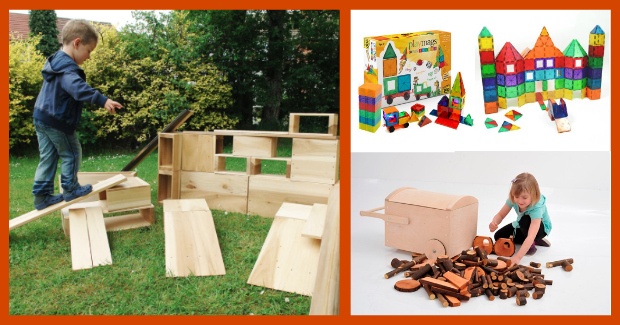
Did you know there’s no need to spend a fortune when creating enabling environments in your early years setting? In fact, sometimes less is more.
As you know, small children thrive when they’re given the space and freedom to use their imagination, express their ideas, and explore possibilities. And when it comes to construction play, blocks are one of the most versatile, affordable, and flexible resources you can provide.
The reason?
Blocks are an unstructured play material.
Children have the creative freedom to arrange and explore blocks in whichever way their imagination decides. They can build, pile, spread… and it’s this scope for open-ended thinking, which encourages children to draw upon their natural curiosity to ask questions and discover – independently of adult intervention.
- What happens if I pile another brick on top of my tower?
- How far will my ‘snake’ stretch, if I use all the blocks in the bucket?
- Why does this block feel different to that block?
The role of the setting
Whilst children can play independently with blocks, there’s plenty settings can do, to create an enabling environment, which promotes learning.
For starters, practitioners can use encouraging language to provide a safe space for children to take “risks” and make “mistakes”. This approach boosts children’s confidence and self-esteem and helps to build their resilience.
In addition, block-based activities create plenty of opportunities for practitioners to observe learning in action – all disguised as fun! For example:
- Mathematics skills can be developed through counting, sorting different shapes and colours, discussing positions and directions, and arranging blocks of various sizes
- Language skills can be taught as children learn and use the vocabulary associated with construction
- Speaking skills follow from this. For example, when a child has finished constructing an object from blocks they can be asked to discuss what they’ve created
- Physical development is encouraged in terms of moving and handling skills. Stacking, building, joining, positioning – all these aspects of using blocks allow children to develop their hand-eye coordination, their spatial awareness, and their fine motor skills
- Blocks also encourage an interest in science. For example, construction leads to engineering, and toppling towers links to scientific principles such as gravity
- Finally, blocks can even allow children to develop their understanding of the world. That’s because role play can be seamlessly integrated into construction play. When children build structures, this can lead to conversations about different jobs or different ways of life
Offer a variety of blocks
When it comes to construction play in your early years setting, you can never have enough blocks!
So think creatively about what you make available. For example, large block sets can be taken into the garden and set up to encourage collaborative play, whilst small construction sets can be used in tabletop play.
You can even make your own sets of blocks by collecting cardboard boxes, chunky bits of wood, and other stackable objects. This could be a great way to engage parents and encourage children to bring items into reception/nursery based on what they’ve found at the weekend.
How have you used blocks in your setting? Please share your ideas in the comments below.

fantastic post thank you
Can you be more specific about the content of your article? After reading it, I still have some doubts. Hope you can help me.
Your point of view caught my eye and was very interesting. Thanks. I have a question for you.